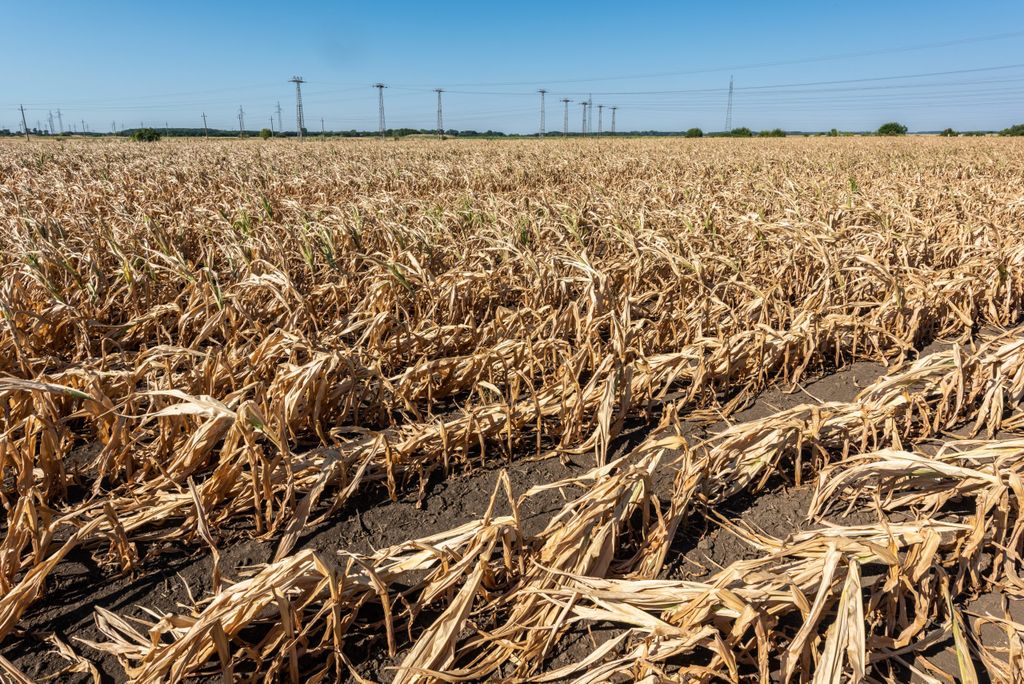A bold vision for a climate-neutral and competitive Europe
Next event In person & livestreamed

- Area of Expertise
- Climate, Energy & Natural Resources
Climate, Energy & Natural Resources

Director of the Internal Displacement Monitoring Centre (IDMC)
In 2020 alone, disasters triggered 30.7mn new displacements around the globe, according to the latest report by Internal Displacement Monitoring Centre (IDMC). Most were caused by weather-related events, such as storms and floods. While it would be wrong to attribute all these to the adverse effects of climate change, evidence suggests that climate change increases the frequency and intensity of certain weather events. Recent research by ETH Zurich shows that the risk of flood-related displacement increases by more than 50% for each degree of global warming.
However, not only rapid onset events can lead to displacement. So-called slow onset events, such as droughts, sea-level rise or glacier retreat, are directly linked to the adverse effects of climate change and can also force people to leave their homes. This frequently happens when these effects interact with other factors like chronic poverty, marginalisation or limited access to productive land.
Many of the countries that are most vulnerable to climate change, according to the ND-GAIN Country Index, lie in Southeast Asia and sub-Saharan Africa. In addition to the adverse effects of climate change, many of these countries also face political instability, conflict and violence, as well as rapidly growing populations, particularly in urban areas, which all significantly increase displacement risk. Calculations undertaken by IDMC show that in 2020, 95% of all new displacements caused by conflict occurred in countries vulnerable or highly vulnerable to the effects of climate change.
Although climate change vulnerability is largely concentrated outside of Europe, climate displacement is not just a problem for low-income or fragile countries. In 2010, floods that had been aggravated by sea-level rise caused the deaths of 29 people and displaced hundreds of others in the French community of La Faute-sur-Mer. Many of those displaced never returned to their former homes. More recently, one of the most intense storm seasons displaced thousands in western Europe. Storm Gloria alone led to more than 2,100 displacements in southern France and Spain in January 2020, killing 14 people.
The EU is well-advised to prepare for disaster and climate displacement
As worrying as the steadily increasing numbers of displacements caused by disasters and climate change around the globe are, fears of a mass influx of ‘climate refugees’ are ill-founded. Existing evidence shows that the vast majority of those displaced seek refuge within the borders of their own countries. Rare examples of cross-border migration triggered by disasters or by nexus situations of overlapping conflict and disasters exist – for example in Kenya and Ethiopia after the 2011 drought in Somalia or in Mexico and Brazil after the 2010 earthquake in Haiti – but have so far been limited to a regional level.
To this day, not a single person has been granted refugee status pursuant to the Geneva Refugee Convention solely on the basis of having been displaced by disasters or climate change. Countries granting international protection have so far either based their decisions on broader humanitarian refugee criteria in regional or national law or on a simultaneously existing conflict in the country of origin. The principle of non-refoulement can, however, apply, as the Human Rights Committee found in Teitiota v New Zealand, judging that climate change can expose individuals to life-threatening risk, “thereby triggering the non-refoulement obligations of sending states”.
Although Europe is currently not a hotspot for climate induced migration, the EU is well-advised to prepare for disaster and climate displacement – internally and in its relationship with partners around the world. Internally, the new EU Climate Adaptation Strategy presented by the European Commission in February 2021 is an important step in the right direction as it helps to make the EU better prepared for and more resilient to climate change.
On climate induced displacement – an issue that is so far not explicitly addressed in the strategy – the European Union could draw additional inspiration from existing regional frameworks. Examples include the African Union’s Kampala Convention and its far-reaching provisions on protection from disaster or climate induced displacement, or the Intergovernmental Authority on Development’s (IGAD) Free Movement Protocol, allowing people fleeing disasters and the adverse effects of climate change to seek protection in neighbouring countries. Current EU legislation limits free movement to a maximal duration of three months unless a person can prove having sufficient resources.
Policymakers could make good use of the EU’s privileged role
As the world’s largest development and humanitarian donor, the EU is already doing a lot to help improve partner countries’ preparedness and resilience to the adverse effects of climate change and disaster risks. More than 46% of all EU humanitarian projects include disaster preparedness activities, and strengthening resilience to climate change is an integral part of the EU Emergency Trust Fund for Africa.
Moving forward, the European Union could use its leading role to promote a global and unified approach to the issue of cross-border displacement, including by bridging existing protection gaps and recognising climate displacement as a legal basis for granting international protection as recently suggested by the European Parliament’s Development Committee.
While it is unlikely that the European Union will become a destination for people fleeing the adverse effects of climate change any time soon, policymakers could make good use of the EU’s privileged role to create the necessary global momentum to find much-needed policy solutions to climate induced displacement and migration.
Next event In person & livestreamed

Past event In person & livestreamed

Past event In person & livestreamed

Past event In person & Livestreamed





Stay informed
We use cookies and similar technologies to adjust your preferences, analyze traffic and measure the effectiveness of our campaigns. Learn more about our privacy policy.